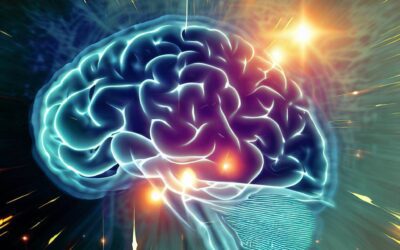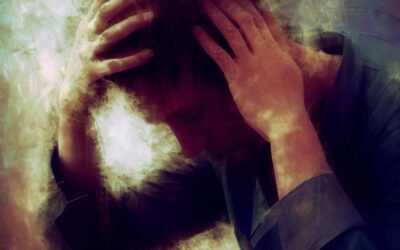In today’s fast-paced world, we often encounter various challenges that can leave lasting impressions on our minds. For some individuals, especially those who have experienced traumatic events, these impressions can manifest as Post-Traumatic Stress Disorder (PTSD). PTSD is a mental health condition that affects millions of people worldwide, and it can have a significant impact on their daily lives. In this blog, we will explore the nature of PTSD, its causes, symptoms, and available treatment options. Moreover, we will delve into coping strategies for individuals living with PTSD, and how their loved ones can offer support.
What is PTSD?
PTSD is a psychiatric disorder that develops in some individuals after experiencing or witnessing traumatic events. These events could be anything from natural disasters, accidents, physical or sexual assault, to combat exposure for military personnel. PTSD can occur in people of all ages, genders, and backgrounds, and its effects can be long-lasting if left untreated.
Causes of PTSD
Traumatic Events
One of the primary causes of PTSD is experiencing or being exposed to traumatic events. These events can be single incidents or prolonged situations that overwhelm an individual’s ability to cope effectively.
Childhood Trauma
Childhood trauma, including abuse, neglect, or household dysfunction, can also lead to the development of PTSD later in life. Early intervention and support are crucial to mitigating the long-term effects of such experiences.
Military Combat
Military veterans often face unique challenges that can result in PTSD. The intense and life-threatening situations they encounter during combat can leave deep emotional scars.
Common Symptoms of PTSD
PTSD manifests through various symptoms, which can be categorized into three main clusters:
Re-experiencing Symptoms
Individuals with PTSD may have intrusive memories or nightmares about the traumatic event. They might also experience distressing flashbacks, making them feel as if they are reliving the event all over again.
Avoidance Symptoms
Avoidance symptoms involve staying away from anything that reminds the person of the traumatic event. This can lead to social withdrawal and a sense of emotional numbing.
Hyperarousal Symptoms
Hyperarousal symptoms often make individuals with PTSD feel constantly on edge. They may have difficulty sleeping, experience anger outbursts, or have a heightened startle response.
Diagnosis and Assessment
To diagnose PTSD, mental health professionals use the criteria outlined in the DSM-5 (Diagnostic and Statistical Manual of Mental Disorders, Fifth Edition). Additionally, a thorough psychological evaluation helps in understanding the individual’s history and experiences to make an accurate diagnosis.
Treatment Options
Several effective treatment options are available for individuals with PTSD:
Cognitive Behavioral Therapy (CBT)
CBT is a widely used therapeutic approach that helps individuals challenge and modify negative thought patterns and behaviors related to the traumatic event.
Eye Movement Desensitization and Reprocessing (EMDR)
EMDR is a specialized therapy that uses guided eye movements to help individuals process traumatic memories and reduce their emotional impact.
Medication Management of PTSD
In conjunction with psychotherapy, medication can play a vital role in managing the symptoms of PTSD. It is essential to understand that not all individuals with PTSD require medication, and the decision to use medication should be made collaboratively between the individual and their mental health professional. Medications are generally prescribed when the symptoms of PTSD are significantly impacting the person’s daily life and functioning.
Types of Medications Used for PTSD
1. Antidepressants
Antidepressants are commonly prescribed to treat PTSD, especially when the individual is also experiencing symptoms of depression or anxiety. Selective Serotonin Reuptake Inhibitors (SSRIs) and Serotonin-Norepinephrine Reuptake Inhibitors (SNRIs) are the two main classes of antidepressants used for PTSD management. These medications work by regulating the levels of neurotransmitters in the brain, helping to improve mood and reduce anxiety.
2. Prazosin
Prazosin is a medication that is sometimes prescribed to help manage nightmares and sleep disturbances associated with PTSD. It is an alpha-blocker that can help relax the blood vessels and reduce the body’s stress response, which can lead to better sleep patterns.
Effectiveness of Medication for PTSD
Medication can be effective in reducing certain symptoms of PTSD, such as anxiety, depression, and sleep disturbances. However, it is essential to recognize that medication does not address the underlying trauma or serve as a cure for PTSD. Instead, it helps to alleviate the intensity of the symptoms, making it easier for individuals to engage in psychotherapy and other coping strategies effectively.
Collaborative Approach
The decision to start medication should be made in collaboration with a mental health professional. The professional will conduct a thorough evaluation to determine if medication is a suitable option based on the individual’s medical history, current symptoms, and any existing medical conditions or medications.
Monitoring and Adjustment
Once a medication is prescribed, close monitoring is crucial to assess its effectiveness and any potential side effects. The dosage and type of medication may need adjustments over time to ensure the best possible outcome.
Complementary Treatments
Medication management is often most effective when combined with other treatments. Psychotherapy, such as Cognitive Behavioral Therapy (CBT) or Eye Movement Desensitization and Reprocessing (EMDR), can complement the benefits of medication, providing a comprehensive approach to managing PTSD.
Safety and Precautions
While medication can be beneficial, it is essential to consider potential risks and side effects. Mental health professionals carefully weigh the benefits against the risks and tailor the treatment plan accordingly. Individuals on medication should promptly report any concerning side effects to their healthcare provider.
Coping Strategies for Individuals with PTSD
Living with PTSD can be challenging, but several coping strategies can help:
Self-Care
Practicing self-care, such as exercise, mindfulness, and engaging in hobbies, can significantly improve the well-being of individuals with PTSD.
Support Networks
Having a strong support system of friends and family who understand and empathize with the individual’s struggles can provide invaluable emotional support.
Mindfulness Techniques
Mindfulness techniques, like meditation and deep breathing, can help manage stress and anxiety associated with PTSD.
PTSD in Military Veterans
Military personnel often face unique challenges related to PTSD:
Unique Challenges
Military veterans may experience difficulties readjusting to civilian life, and their PTSD symptoms may interfere with daily functioning.
Veteran Support Programs
Various support programs are designed specifically for veterans, providing them with resources to cope with PTSD and related challenges.
PTSD in Children and Adolescents
PTSD can have a profound impact on the development of children and adolescents:
Impact on Development
Untreated PTSD in young individuals can impede their emotional and social development, highlighting the importance of early intervention.
Therapeutic Interventions
Therapies tailored to the needs of children and adolescents can help them process trauma and build resilience.
PTSD and Substance Abuse
PTSD is often linked to substance abuse:
Co-occurring Disorders
Many individuals with PTSD may turn to substances as a way to cope with their distress, leading to co-occurring disorders.
Integrated Treatment Approaches
Addressing both PTSD and substance abuse simultaneously through integrated treatment approaches can be more effective.
Supporting a Loved One with PTSD
Support from loved ones is crucial for those living with PTSD:
Understanding and Empathy
Educating oneself about PTSD and showing understanding and empathy are vital in providing support.
Communication Tips
Open and non-judgmental communication can create a safe space for individuals to share their feelings and experiences.
Overcoming Stigma and Seeking Help
Overcoming the stigma associated with mental health is essential:
Breaking the Silence
Encouraging open discussions about mental health can help break down the barriers to seeking help.
Awareness Campaigns
Supporting and participating in awareness campaigns can promote understanding and acceptance.
The Role of Psychiatry and Mental Health Professionals
Mental health professionals play a crucial role in addressing PTSD:
Creating Safe Spaces
Creating safe and non-judgmental environments allows individuals to feel comfortable seeking help.
Culturally Competent Care
Being culturally competent helps mental health professionals better understand and meet the unique needs of diverse individuals.
PTSD Prevention Strategies
Preventive measures can reduce the risk of PTSD:
Resilience Building
Promoting resilience through coping skills and support systems can help individuals better navigate difficult situations.
Early Intervention
Early intervention and prompt treatment after a traumatic event can mitigate the development of PTSD.
Conclusion
PTSD is a complex mental health condition that requires understanding, compassion, and appropriate treatment. Raising awareness and fostering supportive environments can help individuals with PTSD lead fulfilling lives despite their struggles. Remember, seeking help is a sign of strength, and with the right support, healing is possible.
Medication can be a valuable tool in managing the symptoms of PTSD, particularly when used in conjunction with psychotherapy and other coping strategies. The decision to use medication should be made through open and informed communication between the individual and their mental health professional. With the right treatment approach, individuals with PTSD can work towards healing and improving their overall quality of life.
FAQs
- Is PTSD only caused by military experiences?
No, PTSD can be caused by various traumatic events, including accidents, natural disasters, and experiences of violence or abuse.
- Can children develop PTSD?
Yes, children can develop PTSD after experiencing or witnessing traumatic events, and it may affect their emotional development.
- Is PTSD treatable?
Yes, PTSD is treatable through various therapeutic approaches like CBT, EMDR, and medications, depending on the individual’s needs.
- Can substance abuse worsen PTSD symptoms?
Yes, substance abuse can exacerbate PTSD symptoms, leading to more significant challenges in coping with the disorder.
- How can I support a friend or family member with PTSD?
Educate yourself about PTSD, offer understanding and empathy, and encourage them to seek professional help if needed.





